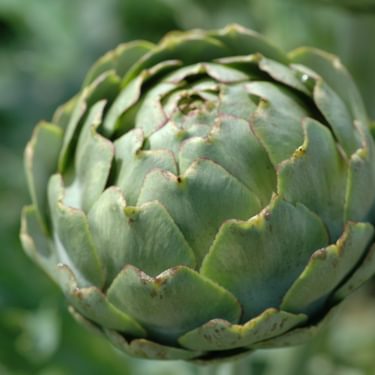
Globe Artichoke
Grown for their large edible flower buds, globe artichokes are easy to grow and beautiful to look at. In summer, bees throng to the flowers and in the autumn, their statuesque seedheads are loved by birds.
| Growing calendar | |
|---|---|
| Sow indoors | Feb-Mar |
| Plant out | April-June |
| Harvest | Jun-Sep |
A relative of the cardoon, globe artichokes are large perennial vegetables that produce edible flowerheads on giant stalks with silvery, spiky leaves. Lovely for the flower border and vegetable bed. The central leaves and heart can be cooked and eaten.
How to grow globe artichoke
Sow seed 1cm deep in pots, in a warm place indoors and transplant outdoors when the weather warms. You can also plant bare-root artichokes in spring.
Space plants 90cm apart and choose a fertile, sunny, sheltered site.
Water in prolonged dry weather. Mulch to conserve moisture. Protect roots with straw in colder areas.
Harvesting and using globe artichoke
Cut plump flower heads with short stems when the scales are still soft, green and tight - around early summer. Leave a few flowerheads for the wildlife.
Tips on growing globe artichoke
- Replace or divide plants every three years for the best harvests.
- Side shoots may produce a smaller second crop in later summer.
- Cut back the foliage in winter, once the birds and insects have used the seedheads, and mulch.
| Growing notes | |
|---|---|
| Difficulty | Easy |
| Germination time | 7-14 days |
| Average time to harvest | 18 months |
| Equipment needed | Mulch with compost or straw |
| Average plant size | 120cm tall, 90cm wide |
| Family group to grow with | None (long term, perennial crop) |
| Key nutritional content | Folate |